Croatia Longboards Offer Cool and Green Around-Town Travel
ZAGREB November 19, 2020 - Noticeably bigger than a skateboard, longboards are a cool alternative to urban travel. Meet Croatia's first longboard manufacturers, Crushboards, whose eco-friendly products are healthier to use and way more stylish than other green options
You can walk around some European towns and cities and wonder just where the future is going to fit in. The narrow streets seem to want to accommodate only cars, with pedestrians demoted to the narrow edges. Zagreb isn't like that. Osijek and other towns and cities in Croatia are not like that.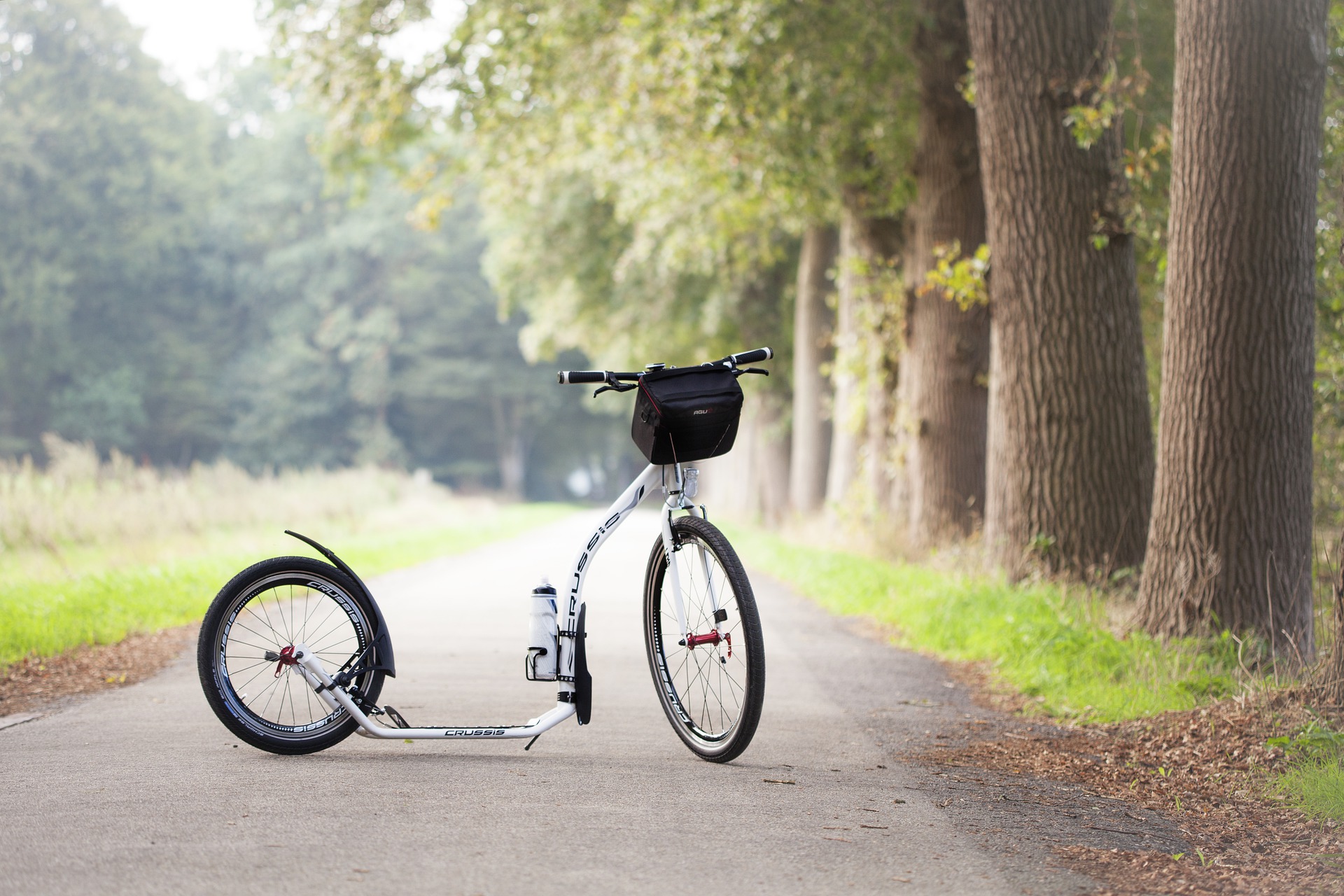 With 220 kilometres of dedicated cycle paths, the city of Zagreb and its residents have been quick to adopt the latest green-friendly ways of getting around the urban environment
With 220 kilometres of dedicated cycle paths, the city of Zagreb and its residents have been quick to adopt the latest green-friendly ways of getting around the urban environment
You only need take a glance at the generous cycle paths around Zagreb to see that this is a city that could easily take on the challenges of a future not reliant on fossil fuels – electric scooters, foldaway bikes, gyroscooters, electric skateboards and monowheels have joined bicycles on the streets of Zagreb as an easy means to get round the city. Could longboards be the next popular choice?
Started by three lifelong friends from Čakovec, Crushboards is the first company in the country to make Croatian longboards. Like a skateboard, only bigger, longboards are well suited to the urban environment of a city like Zagreb.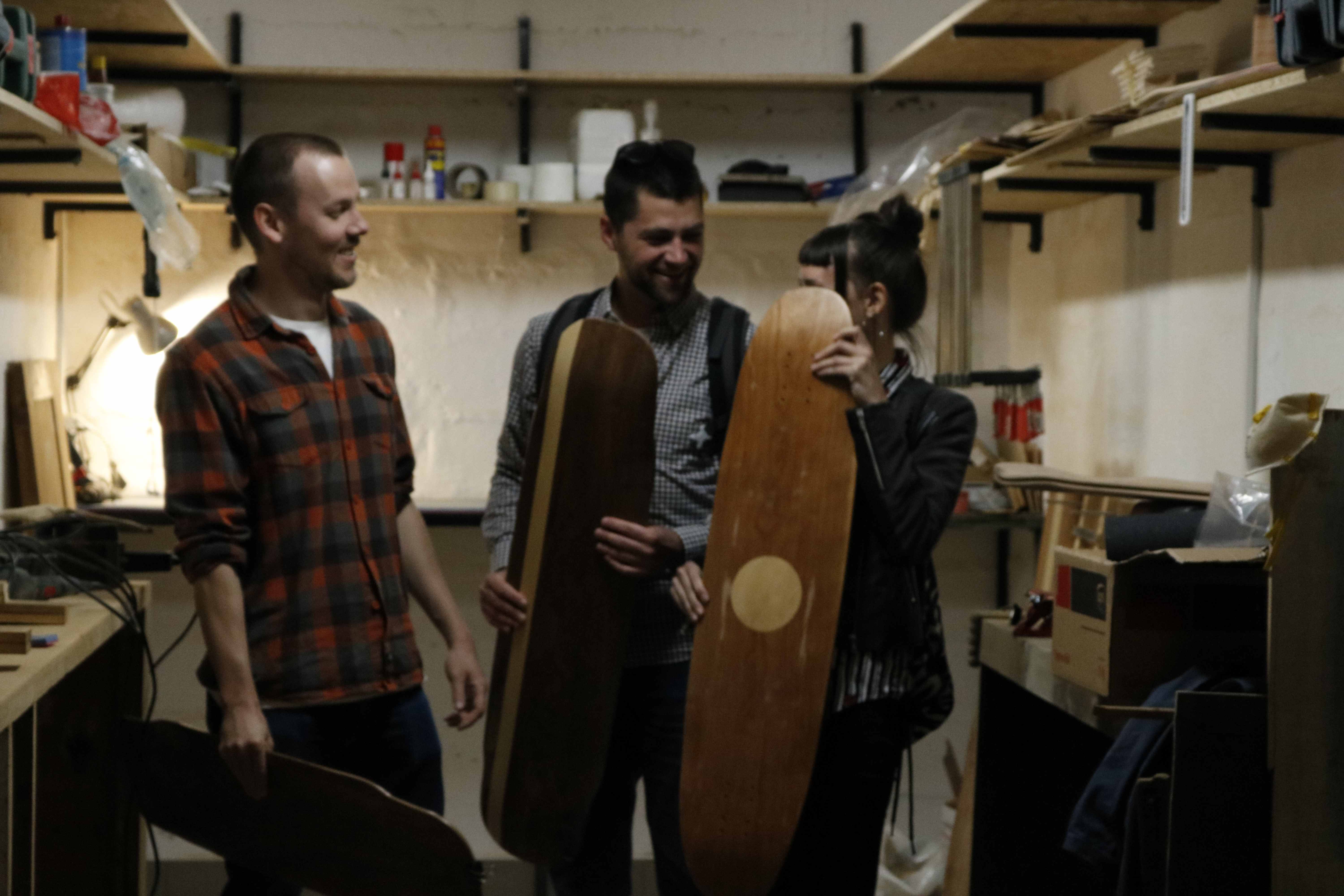 Čakovčani (l-r) Marko Hlebar, Davor Nikolic and Sanda Bogdan inside the Zagreb workshop of Crushboards © Vedran Pažin
Čakovčani (l-r) Marko Hlebar, Davor Nikolic and Sanda Bogdan inside the Zagreb workshop of Crushboards © Vedran Pažin
“This board is longer than a skateboard - 100 centimetres in length.,” Crushboards co-founder Marko Hlebar told TCN when we went to visit their workshop in Zagreb. He runs Crushboards with Davor Nikolic and Sanda Bogdan. “It's a bit heavier than a normal skateboard and uses different wheels. You can perform different tricks on each, dependant on the weight of the board, but the main thing for us is that a longboard is easier to ride on in the urban environment, in the city.”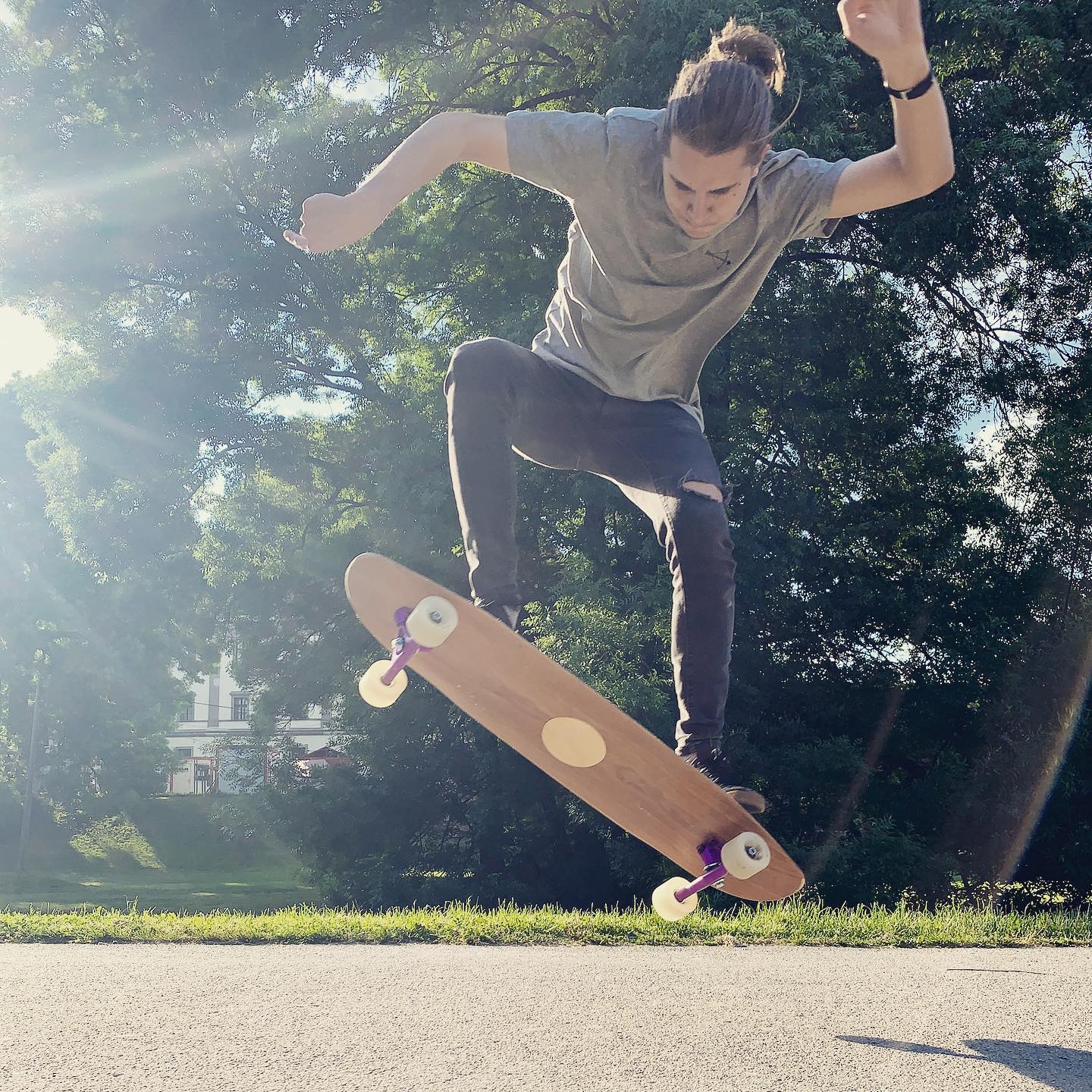 Practising on a Crushboards longboard inside a Zagreb park. The boards are intended as much for a regular inner-city commute as they are for such trickery
Practising on a Crushboards longboard inside a Zagreb park. The boards are intended as much for a regular inner-city commute as they are for such trickery
“The wheels are larger so it's easier to travel on one of these in the city than it is on a regular skateboard,” Marko tells us. “It's better for travelling to work or to appointments, your feet get less tired.”
Rather than being the latest cool evolution in skateboards, it turns out that longboards have been around for a long time. In fact, the very first skateboards that were made probably looked more like the hip, eco-friendly product made by Crushboards than a regular skateboard.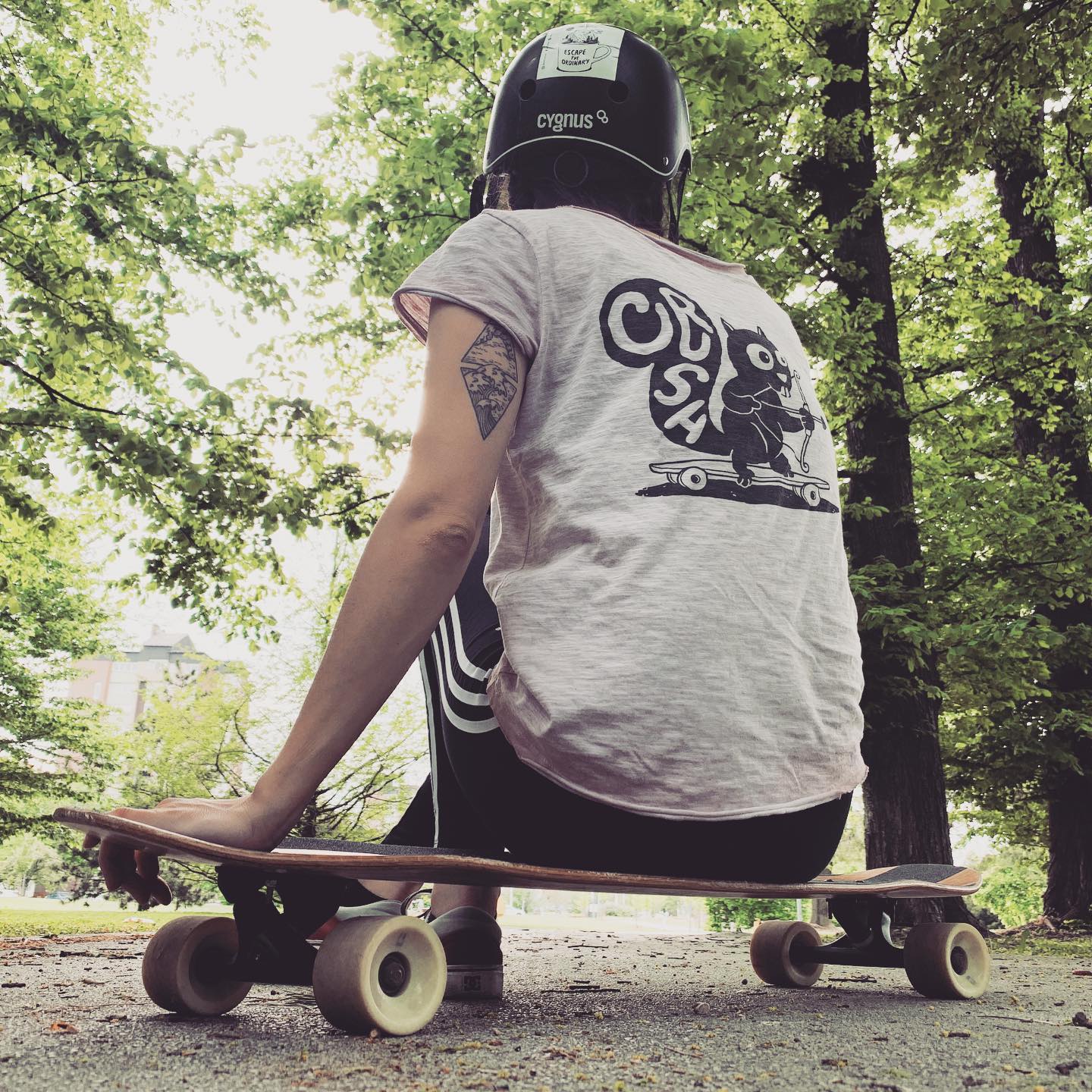 Crushboards see their main product as part of a lifestyle choice - so, it's little surprise to learn they also make their own super-cool t-shirts and accessories
Crushboards see their main product as part of a lifestyle choice - so, it's little surprise to learn they also make their own super-cool t-shirts and accessories
Skateboards were first made in America during the 1940s as a practice board for surfers who were prevented from taking to the waves because of bad weather. But, during its infancy, there were few options available to manufacturers in the skateboarding industry – boards were made using rollerskate wheels, whose size demanded a board closer to that of today's longboard.
The longboard was, therefore, the first popular urban skateboard and remained so until the 1960s. It has fallen in and out of fashion ever since – the development of ultra-fast wheels saw them rise again in popularity due to them being well suited to downhill racing (the bigger board better absorbs the vibrations produced from speed). The relatively recent phenomenon of longboard dancing has also increased the boards' popularity in Asia.
Like regular skateboards, several different types and designs of longboard exist for different uses. The ones currently made by Crushboards are specifically designed for urban travel. Their boards are made using several thin layers of different materials, which strengthen and provide flexibility when glued together. They are finished on the top side with either oak or walnut, with the other layers holding cherry, teak, fibreglass, carbon, kevlar and two veneers. The wheels and their mounts are currently imported, but Crushboards hope to eventually source as much of the materials required from sustainable sources within Croatia.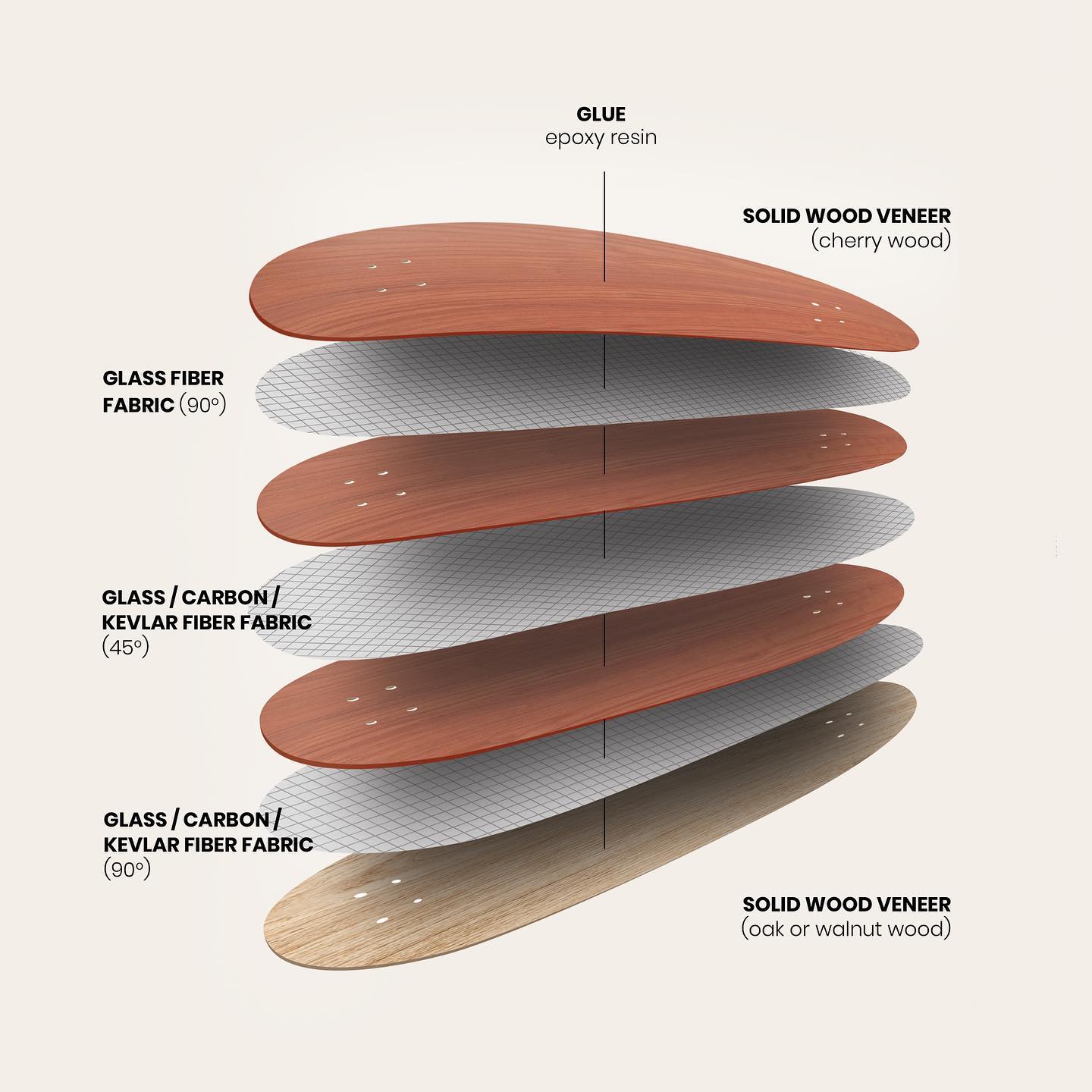 Inside one of Crushboards' longboards
Inside one of Crushboards' longboards
With 220 kilometres of cycle paths occurring throughout Zagreb, the Croatian capital is quick to embrace green modes of transport. Many Croatians are also health-conscious – a motorised scooter or skateboard might get around the city quickly, but they don't increase your exercise quota. Perhaps there's room on Zagreb's streets for these cool urban alternatives to the skateboards of our youths?
All uncredited photos © Crushboards
Why French Education is Important to Croatia: Maryline Boussenard Interview
November 20, 2020 - Zagreb is full of foreigners these days and not all are involved in business or government, but also in education. Maryline Boussenard has recently arrived from France in her new role as Principal of the French International School of Zagreb. Maryline shares her thoughts on Croatia and what makes French education an asset here.
What do you like most working in an international school? What do students and parents like?
An international environment always contributes to personal enrichment. Mixing cultures, languages, and experiences abroad develops open-mindedness. For students, this will provide them an additional opportunity to integrate into higher education all over the world and to adapt to international professional settings. The Eurocampus is part of the AEFE network which brings together more than 500 countries on all continents. Students retain a sense of belonging to the same educational path and are most of the time enrolled in alumni associations.
As for the parents of our students, they value the French education system, recognize the quality of our teachers and teaching and believe their children will be well-prepared for the future by attending our school.
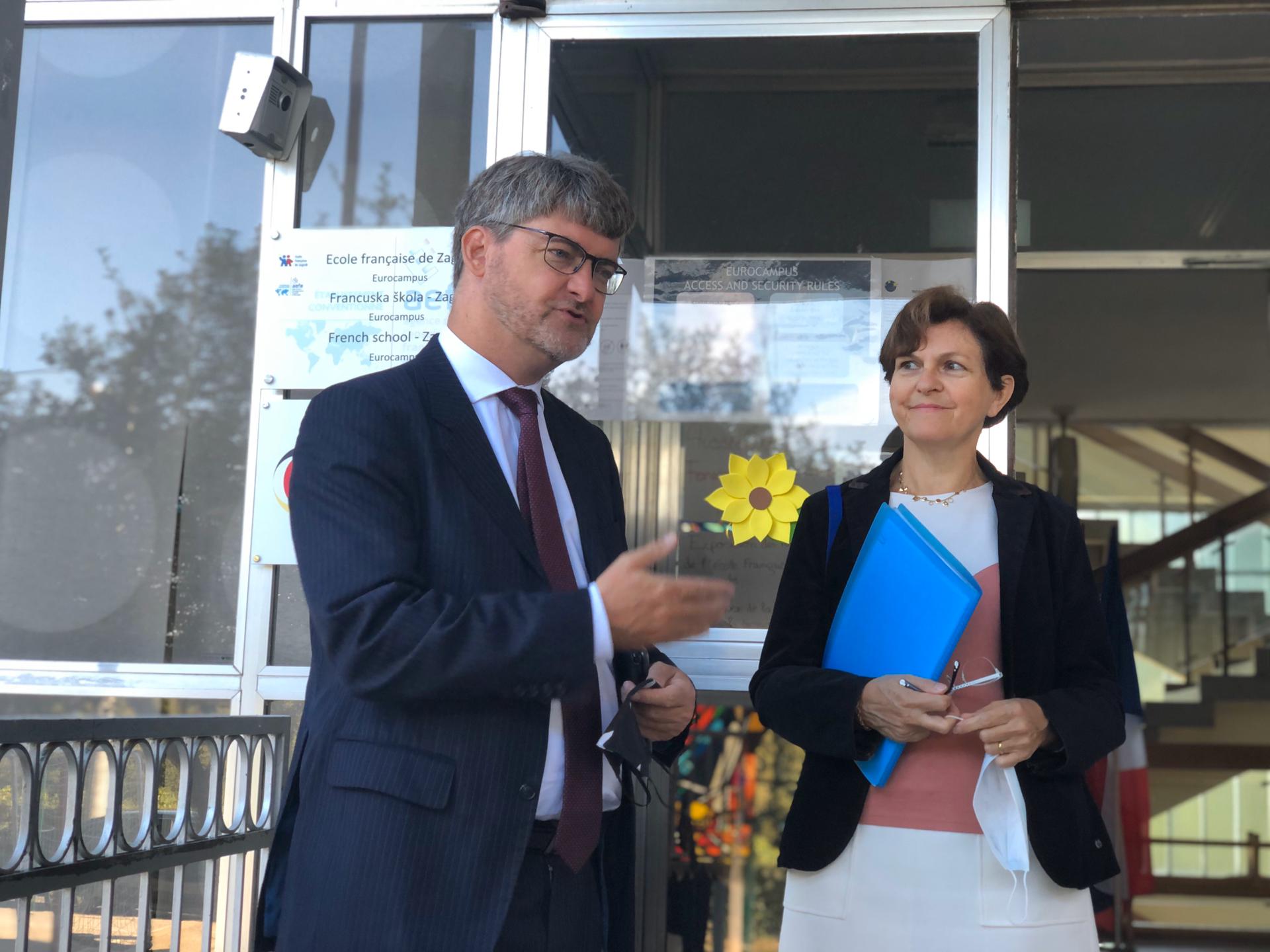
(French Ambassador to Croatia Gaël Veyssière and Maryline Boussenard)
Of all countries in which you could work, why did Croatia interest you? What is the image of Croatia in France?
I immediately accepted the job offered in Croatia on the one hand because AEFE, the Agency for French Education Abroad, represents a network that offers both a guarantee of quality of education and a possibility of orientation towards all universities in the world. On the other hand, joining a Eurocampus was also an element in favor of my choice: I practice German and I have long lived on the German border. The French International School of Zagreb participates in the development of Franco-German friendship relations and the bicultural characteristic of our establishment is an additional asset for the education of our students.
I came to know Croatia as a tourist, but it is by working and living abroad that you really know and understand a people and their history. I also have some Polish origins so I am familiar with Slavic culture.
In France, Croatia has become a country that has experienced more and more success as a tourist destination. French people appreciate its unspoiled nature, its rich and diverse landscapes, a good quality of life and the warm welcome and generosity of its people.
What is unique about French education?
First of all, the French education system is based on republican values stemming from its history: freedom, equality, secularism and fraternity. These values are enshrined in the Education Code and are national. Teachings and educational activities in the fields of citizenship and health are also carriers of these values. Schools therefore have a dual role: transmitting knowledge and training enlightened, free and responsible future citizens.
Who are your students?
Our student body is made up of a very diverse set of children from approximately 25 countries. In fact, only about a third are native speakers of French. A growing number of Croatian children are part of our school community.
What are your impressions of Zagreb so far?
I was immediately won over by Zagreb: a capital on a human scale, green and lively. Social diversity is present everywhere and there is a feeling of security (and it is also a reality). Ideally located geographically (mountain and sea at reasonable distances), it represents in my eyes a perfect balance between culture and nature and I feel home here.
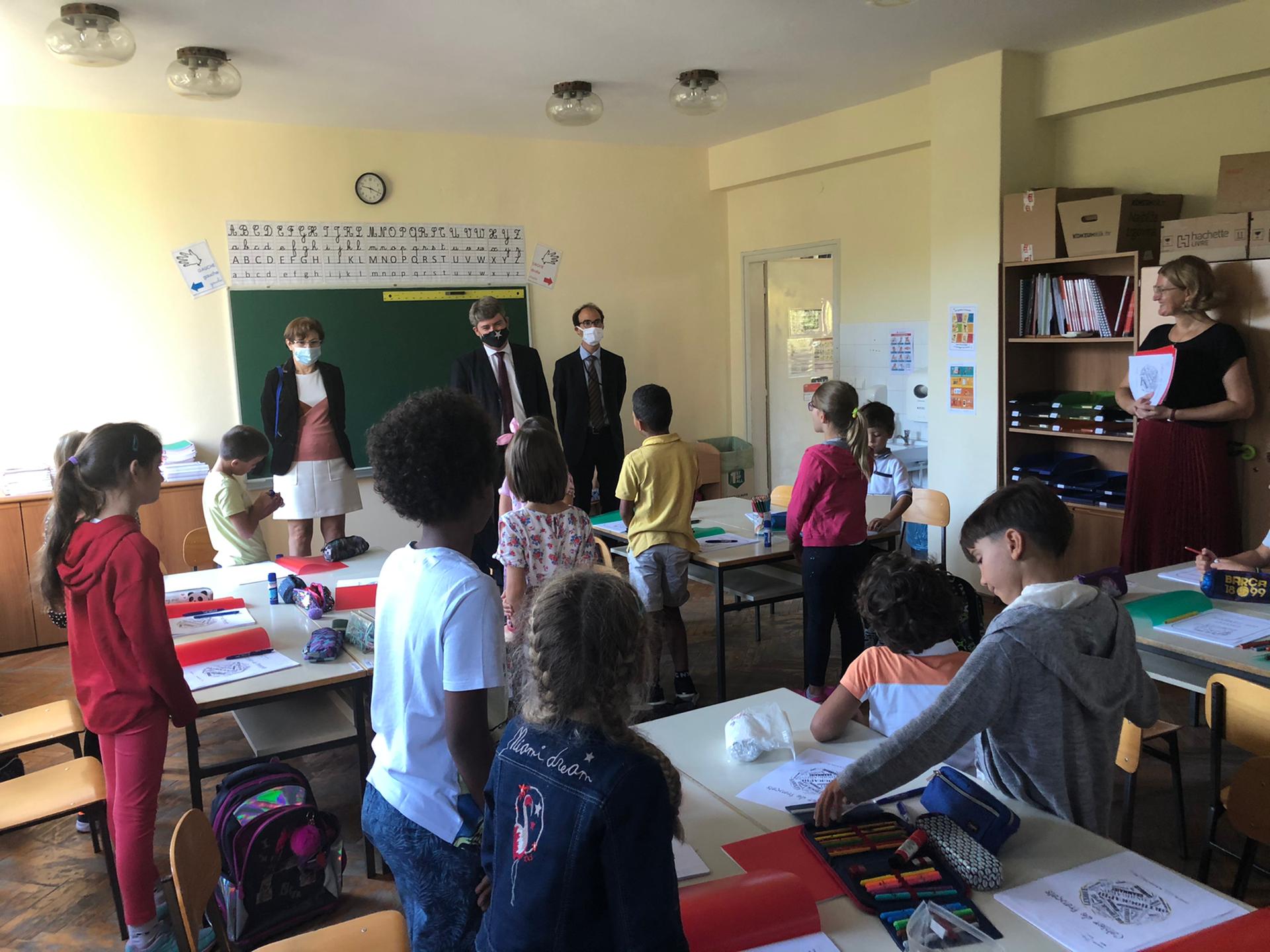
(First day of school year 2020 at the French International School (Maryline Boussenard, Ambassador Veyssière, Guillaume Colin and children of the 2nd Grade Class).)
What are your impressions of Croatian food and wine?
Croats can be proud of their products, of their cuisine, and they are right; their terroir offers an incredible diversity of products from the land and the sea. There are some very good wines and I am fully satisfied to be able to consume local products.
What are some of your personal and professional aspirations while in Croatia?
Professionally, my dearest wish is to see the Eurocampus evolve and that the French School becomes an even more attractive option for families in Zagreb. The quality of the teaching provided by competent and motivated teams, the excellent school climate, the dynamics of the partnership with the German school and the links with the French Embassy make them undeniable assets for our school and it is with pleasure and conviction that I carry out my missions daily.
Personally, expatriation offers a huge chance to get to know a people, a history, and a language in a deeper way than through tourist travel alone. I was fortunate enough to have an education that was open-minded and without prejudice.
I therefore completely share the spirit of openness and the ability to adapt to other cultures that contributes to the excellence of the schools in the AEFE network.
For more news on life in Croatia, follow the TCN Lifestyle section.
Adriatic Coast and North Croatia's Regions with Highest Birth Rates
ZAGREB, Nov 19, 2020 - The biggest positive demographic growth has been recorded along Croatia's Adriatic coast and in the north of the country, according to the data provided by the national statistical office (DZS) on Thursday, ahead of World Children's Day.
World Children's Day is celebrated on 20 November to commemorate the Declaration of the Rights of the Child by the UN General Assembly on 20 November 1959.
Last year, 36,135 children were born in Croatia and 51.1% were boys and 48.9% girls.
The city of Solin near Split had the highest birth rate, and was followed by Metkovic, Kastela, Cakovec and Zapresic. When it comes to municipalities, the southern municipality of Podstrana, east of Split, topped the ranking, and was followed by Zupa Dubrovacka near Dubrovnik and Viskovo near Rijeka, while two municipalities in Medjimurje County -- Nedelisce and Mala Subotica -- ranked fourth and fifth.
The statistical data show that the most common names for girls and boys in Croatia in 2019 were Mia and Luka. David, Jakov, Ivan and Petar were the most popular names for boys, while Ema, Lucija, Sara and Nika were the most popular names for girls.
In the 2019-2020 school year, 139,682 preschool children were included in some programmes of preschool education.
In schools, 460,000 children attended education, and of them 68% were pupils in primary schools.
School-age children accounted for 40% of the country's library membership.
Croatian Medical Union Says Cakovec County Hospital Nearly Filled to Capacity
ZAGREB, Nov 19, 2020 - Croatian Medical Union (HLS) leader Renata Culinovic Caic told Hina on Thursday that it was a matter of hours when the county hospital in the northern town of Cakovec would be filled to capacity.
She noted that secondary schools were one of the major sources of infection and that they should switch to online classes.
Culinovic Caic said that more patients were being admitted to the county hospital in Cakovec than were being released.
"Of the 102 available places, 97 are occupied and more and more younger people with a difficult clinical condition are being admitted, requiring intensive and long treatment," she said, warning that it was a matter of hours when the hospital would be filled to capacity.
Culinovic Caic also noted that one should not consider the lower number of detected infections among high school students to be reliable, warning that there were probably many who were infected but do not have symptoms or have very mild symptoms, which made it possible for the disease to spread.
Representatives of medical organisations and associations in Medjimurje County have said that the northern county is at the top of the national ranking in terms of the number of persons tested and that in the past two weeks the share of positive cases in the total number of persons tested had grown from 24% in October to 34%.
Local medical associations on November 6 urged the county coronavirus crisis management team to introduce stricter epidemiological measures, a demand that has been met to some extent.
They also called for stricter control of compliance with proposed restrictions and for taking a firmer stand towards the national COVID-19 response team as well as for the timely introduction of additional restrictions at the county level.
Croatia with Biggest Decrease in Car Registrations in EU
ZAGREB, Nov 19, 2020 - In the first ten months of this year, the demand for new passenger cars decreased the most in Croatia of all EU member states but the coronavirus pandemic has caused a decline on the whole EU passenger car market, figures released by the European Automobile Manufacturers Association (ACEA) show.
In the period from January to October, a total of 8 million new cars were registered in 26 EU member states (without Malta), which is a decrease of 26.8% compared to the same period last year, ACEA said on Thursday.
"Ten months into the year the impact of COVID-19 on car demand remains unprecedented," ACEA said in a press release on its web site.
Looking at the major EU markets, Spain saw the steepest drop (-36.8%) so far this year, followed by Italy (-30.9%), France (-26.9%) and Germany (-23.4%), the press release said.
In that period, a total of 31,348 new cars were registered in Croatia, which is a drop of 43.5% year on year and also the biggest decrease in the Union.
New blow in October
After a brief recovery in Septembe,r when the demand for new cars increased by 3.1% in the EU, in October it fell once again after reimposed restrictions to battle a second wave of the coronavirus.
Demand fell markedly in Spain (-21%) while more moderate decreases were observed in France (-9.5%) and Germany (-3.6%). In Italy, on the other hand, demand remained almost unchanged (-0.2%) compared to October 2019 levels.
In Croatia, a total of 3,102 new cars were registered in October, according to ACEA, which is 24% fewer than in October last year. Demand in September in Croatia fell by 12.8% y-o-y.
New Archeological Findings in Ludbreg, Could be a Part of Bjelobrdo Culture
November 19, 2020 – Mayor Dubravko Bilić says that the new archeological findings in Ludbreg are proof that it has always been a desirable place to live.
As Lokalni.hr reports, the project "Improvement of continental tourism through tourist valorization of the historical and cultural heritage of the City of Ludbreg", worth 18 million kuna, gives increasingly visible results. The promenade and Zanatski trg (The Craft Square) have been arranged, and the Hotel Crnković has been renovated.
"We have always known that Ludbreg has the potential for tourism development. Through this project, we got the opportunity to present to the general public what the people of Ludbreg already know, and that is that people have lived here since time immemorial,“ said Mayor of Ludbreg Dubravko Bilić.
Part of the project is the arrangement of the cemetery of the Parish Church of the Holy Trinity, where interesting findings were made during drainage and archaeological supervision.
Late imperial period
"The works started on the west side of the cemetery, and at a depth of 1.20 meters, an irregular stone wall connected with plaster was found. Given that the excavation did not expand and that we do not have all the data, we do not know what exactly it is about. In 2009, the Croatian Restoration Institute carried out sounding research on the inside of the cemetery, and on that occasion, walls were found on the west side, one of which continues on the outside. It is an object of unknown purpose that can be dated to the late imperial period. Back in 1973, when the Archaeological Museum in Zagreb conducted soundings in Ludbreg, they found a silver earring, made of bent wire and bent in the shape of the letter S, which can be dated to the 10th and beginning of the 11th century. It was assumed that the earring came from the cemetery next to the church, which was located on the site of today's church," explains a young archaeologist Jelena Koprek from the Center for Culture and Information in Ludbreg.
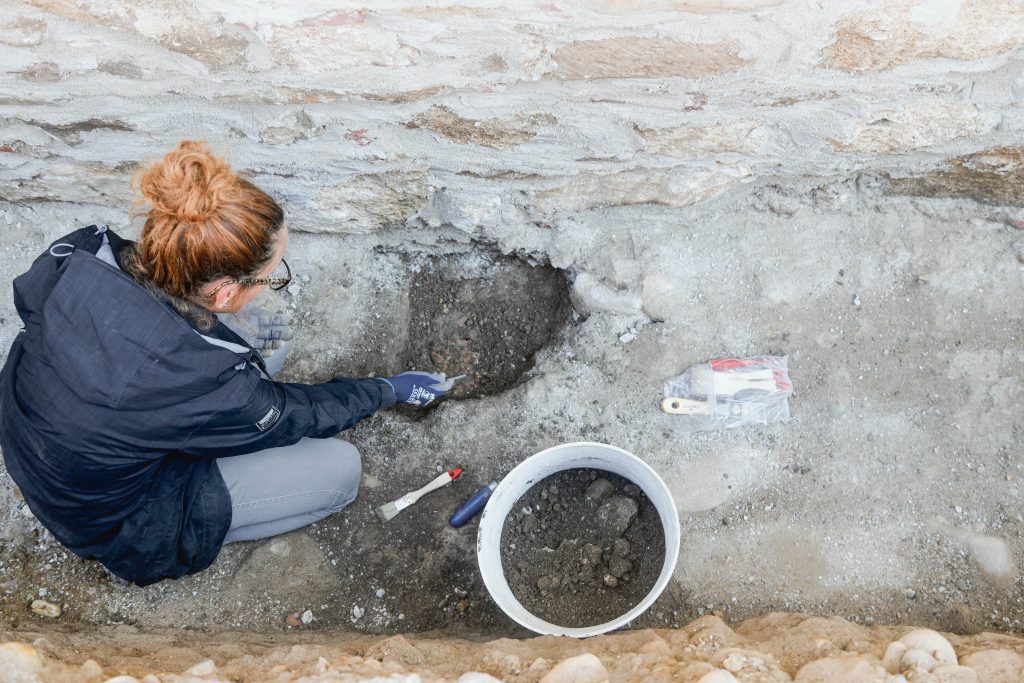
The City of Ludbreg
She adds that guided by this assumption, they started digging a drainage trench on the north side of the cemetery. The project is co-financed by the European Regional Development Fund through the Operational Program Competitiveness and Cohesion.
Seven graves were found at a depth of 1.50 meters. All the deceased were laid on their backs and oriented in a west-east direction with their heads to the west.
"We found iron nails next to the head of the deceased in some graves, so it is to be assumed that the deceased were buried in wooden coffins that rotted over time. In three graves, along with the deceased, findings that place them in the 10th and early 11th centuries were found. The findings with which we dated these graves are earrings, ie links made of bronze wire with a bent end in the shape of the letter S, which was also found in 1973. The findings can be attributed to the Bjelobrdo cultural complex, but only after further research, it will be possible to confirm it accurately," says Koprek.
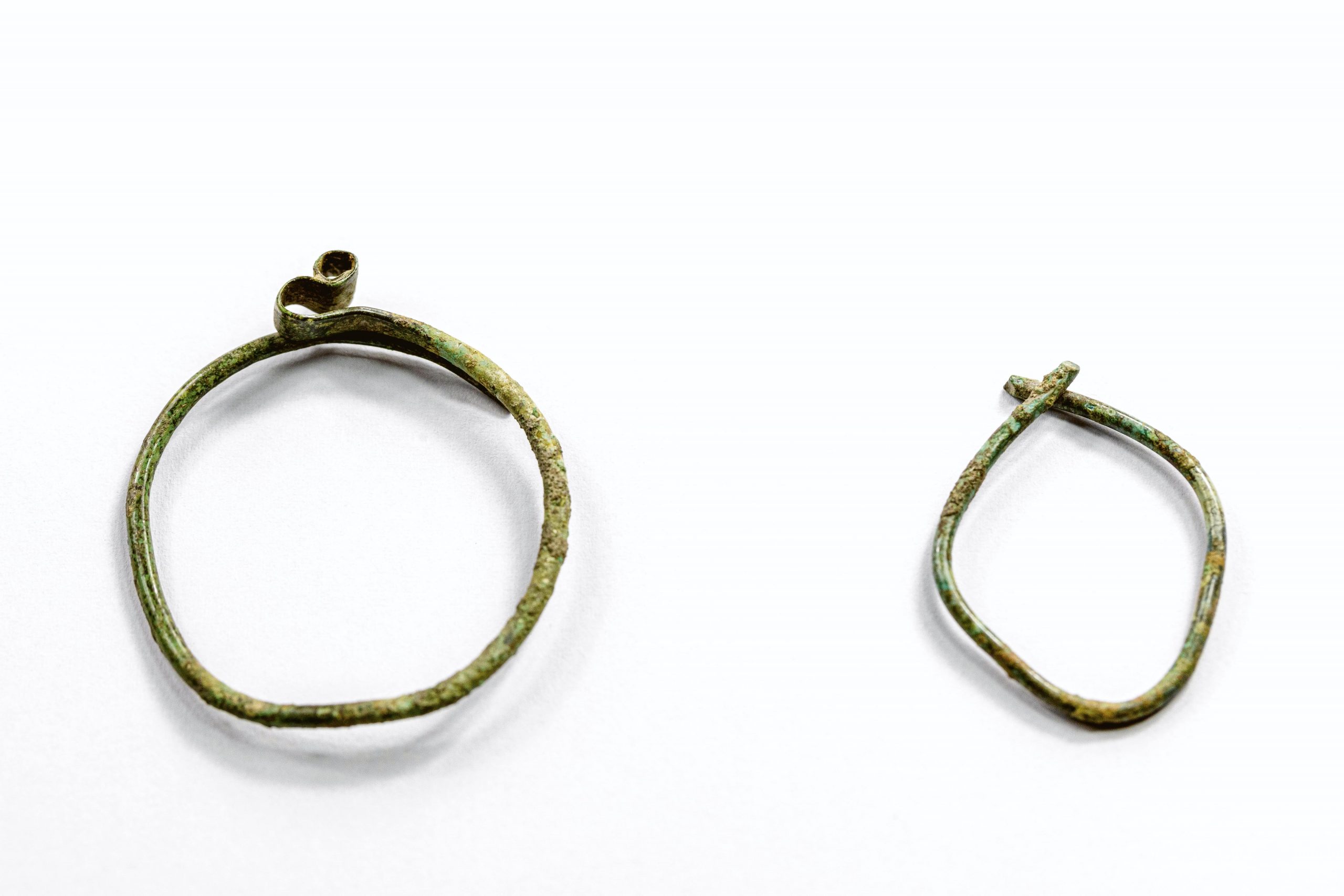
On the left: earring made of bronze wire with a bent end in the shape of the letter S; on the right: plain earring with endings crossing one over the other / The City of Ludbreg
Archeological park to be opened soon
Mayor Bilić notes that it is important for the City of Ludbreg to enable citizens to start engaging in tourism, either as an additional job or profession, through projects they are implementing, and thus to see their future there.
"The findings in the very center of the city are not new, but thanks to this project we will finally be able to show them to others. The new findings are just proof that we have always been a desirable place to live," concludes Mayor Bilić.
The town of Podravina, known for its wonders and legends, will soon open the doors of the archeological park.
Bjelobrdo culture
According to Hrvatska enciklopedija, Bjelobrdo culture, or Bijelo Brdo (White Hill) culture is predominantly Slavic culture of the early Middle Ages (10th – 12th centuries), widespread in the Pannonian plain. It is named after the cemetery in Bijelo Brdo near Osijek. In Croatian, the most important sites are located in Vukovar, Josipovo, Kloštar Podravski. Row cemeteries without grave architecture are what characterizes Bjelobrdo culture, and among the grave goods, jewelry (simple rings, rings with an S-shaped end, grape-shaped earrings, necklaces, rings), iron tools and weapons, and ceramics stand out.
To read more news from Croatia, follow TCN's dedicated page.
Zagreb Announces Mass Rapid Coronavirus Testing
ZAGREB, Nov 19, 2020 - The City of Zagreb is launching a massive antigen coronavirus testing campaign on Monday November 23, the city administration announced on Thursday following a surge in daily infections.
The authorities have ensured 50,000 rapid tests which produce results within 15 minutes.
Four stages of project
The project will be carried out in four stages.
The first stage will cover the testing of chronic patients, elderly and infirm people in their homes, the second stage will focus on residents of city- and privately-owned nursing homes, the third stage will cover health workers and the fourth stage all other people.
Tests will be carried out at 12 sites in the city and appointments are made via an online application form, Mayor Milan Bandic said at a press conference. He said that more tests would be provided, depending on the public interest.
The authorities said that the increase in the number of people with serious forms of the disease and the growing hospitalisation numbers and people on ventilators showed the need for systematic testing, especially of vulnerable groups.
Since the outbreak of the coronavirus epidemic in late February, 361 residents of Zagreb have died, 22,080 have tested positive, and 3,272 are currently active, the head of the municipal health department, Vjekoslav Jelac, said.
Grant Agreement Signed for Purchase of Helicopters for Civil Protection Services
ZAGREB, Nov 19, 2020 - A grant agreement for the purchase of three multi-purpose helicopters for the civil protection services was signed on Thursday, the Ministry of Economy and Sustainable Development said in a press release.
The total value of the project is HRK 190 million, of which HRK 161.5 million was provided by the European Union. It includes the purchase of three helicopters and the provision of training for emergencies, natural disasters and major accidents.
The agreement was signed by Interior Minister Davor Bozinovic, Economy and Sustainable Development Minister Tomislav Coric and the CEO of the state-owned Hrvatske Vode water management company, Zoran Djurokovic.
Helicopter support will ensure a timely and effective response by all civil protection services in search and rescue operations, air surveillance of disaster-affected areas, transport of people and equipment to and from those areas, and provision of emergency medical aid, Bozinovic said.
Coric said that a flood protection programme for the Kupa river area would be approved by the end of the year and that documents were also being prepared to strengthen the country's capacity for seismic hazard and risk assessment.
PM: Draft 2021 Budget to Ensure Croatia's Economic Recovery
ZAGREB, Nov 19, 2020 - Prime Minister Andrej Plenkovic presented a draft 2021 state budget in parliament on Thursday, saying that it ensured economic recovery and continued to support citizens and the economy.
"The budget ensures Croatia's economic recovery in the wake of the COVID-19 pandemic. The goal is, despite the fact that Croatia has suffered economic and financial consequences and Zagreb was struck by an earthquake, all of which has affected public finances, to continue to support citizens and the economy," he said.
GDP projected to increase 5% in 2021
The prime minister mentioned the measures taken so far to maintain employment and economic activity, saying that HRK 8.1 billion will have been spent this year for job retention.
Various companies were exempt from partly or fully paying taxes and contributions, which cost HRK 5.3 billion, HRK 8.6 billion was set aside for healthcare, salaries, pensions, the jobless and the welfare system, and the tax burden was further reduced, he said.
"It's good that, after more pessimistic forecasts, GDP is expected to drop 8%, which is less than we initially planned. We expect GDP to increase 5% next year, 3.4% in 2022 and 3.1% in 2023. The European Commission forecasts a 5.7% growth for Croatia next year, which is near the top in relation to other member states."
Plenkovic said revenues in 2021 were planned at HRK 147.3 billion and expenditures at HRK 157.9 billion.
He announced that HRK 2.4 billion would be available to repair the damage caused by the earthquake in 2021 and HRK 4.2 billion in 2022, plus additional international sources he said the government would secure.
The prime minister said the government wanted to help those most in need, carer parents, persons with disabilities, ensure a national allowance for seniors and expand parental leave rights.
He said it was very important to keep the deficit at 3% in 2021 and announced that the public debt would be reduced in the years ahead.
"The goal is for the budget to protect the most vulnerable groups and to stimulate entrepreneurs and the economy," he added.
Borrowing up to HRK 33.9 billion in total
Speaking of borrowing, Finance Minister Zdravko Maric said that under the law, borrowing on the domestic and foreign markets could total HRK 33.9 billion.
Maric said a US$ 1.5 billion bond was due in March 2021 and a HRK 6 billion bond in July 2021.
Before the debate on the draft, Karolina Vidovic Kristo (Homeland Movement) and Tomislav Tomasevic (We Can!) said they were given too little time to prepare for an effective debate on such an important document.
The draft budget was tabled on October 30, early enough. I don't recall a draft being tabled this early and if you haven't managed to prepare for the debate in 19 days, you probably have some issues, said Speaker Gordan Jandrokovic.
Pedja Grbin (Social Democratic Party) asked if Croatia had a plan B, given that it relies to a large extent on EU revenues, and Poland and Hungary are announcing a veto on the EU budget. Anka Mrak Taritas (GLAS) warned about the same thing.
Bozinovic: New Measures Will Concern Gatherings, Work from Home
ZAGREB, Nov 19, 2020 - Interior Minister Davor Bozinovic said on Thursday a decision on new anti-coronavirus measures would be adopted this week and that they would restrict the number of people allowed to gather and the business hours of bars and restaurants as well as concern work from home and in shifts.
"The fact is that the numbers are rising and this week we had a weekly increase of about 10%. Last Sunday we said that it is not enough to stabilise growth rates but make sure that the number of new infections starts falling," he told the press after a cabinet meeting.
As for gatherings, Bozinovic said even a gathering of ten could be a problem if infected persons came and did not comply with the measures.
The point of everything is self-discipline, he said, adding that family gatherings and festivities were the best medium for the virus to spread.
He went on to say that according to preliminary reports, yesterday's remembrance procession for war victims in Vukovar was conducted professionally and correctly. He saw that some participants did not wear masks, but said that they did take them at the envisaged points.
Bozinovic said the measures and the messages in Vukovar yesterday had been conceived well and that the result was disproportionately fewer walkers than in the past. "Anything else in terms of bans and law enforcement would have sent the wrong picture, which was the furthest thing from our minds."
As for an unannounced procession in Split which involving hundreds of football fans last night, he said "that's certainly not good." He said he hoped there would be no consequences and that the police took action in line with protection of the peace.


